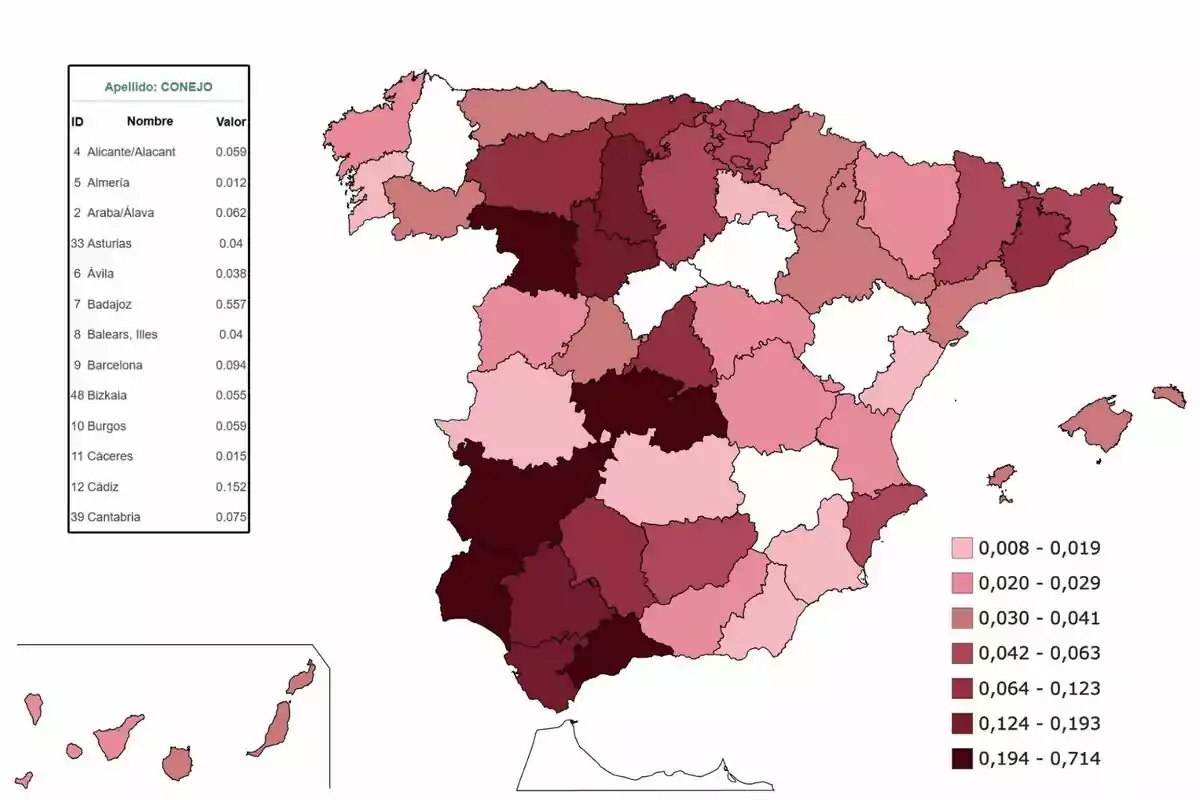
The Curious Last Name That Reminds of an Animal: Very Few People in Spain Have It
A last name that stands out for its uniqueness and, despite its rarity, remains in several regions of the country
Some surnames have a peculiar origin, related to nature or ancient nicknames. Over time, these names have been passed down from generation to generation, maintaining their history and meaning. Many emerged in the Middle Ages, when it was common to identify people by their appearance, profession, or place of residence.
In this case, the surname has a direct connection to the animal world. Its origin is ancient and has managed to persist to present day. Although it is not one of the most common, it remains present in many regions of Spain.

Origin and Meaning of the Surname Conejo
The surname Conejo ("bunny") comes from a term that refers to a small mammal with long ears and great agility. It is believed that it may have originated as a nickname for fast or restless people. It is also possible that it was related to areas where these animals were abundant.
In some cases, surnames derived from animal names had a symbolic meaning. They could refer to qualities such as cunning, speed, or shyness. In medieval times, nicknames were common and, over time, many became family surnames.
There are records of this surname in different eras and regions. Although its exact origin is not fully documented, its presence in various provinces indicates that it spread over the centuries.
Distribution in Spain
Today, the surname Conejo is still present in many areas of the country. According to the INE, 4,973 people have it as their first surname and 5,540 as their second surname. Its distribution is wide, although it is more common in certain provinces. It stands out in Málaga, Badajoz, Toledo, Huelva, and Zamora, among others.

Its presence in different communities shows that it has managed to persist over time. Although it is not one of the most widespread in Spain, it remains recognizable and has an interesting history behind it. Its origin linked to an animal makes it particular and distinct from other more common surnames.
Currently, it continues to be part of many families and maintains its historical legacy. Although its use is not as frequent as other surnames of geographic or patronymic origin, its uniqueness makes it stand out in the Spanish onomastic landscape.
More posts: